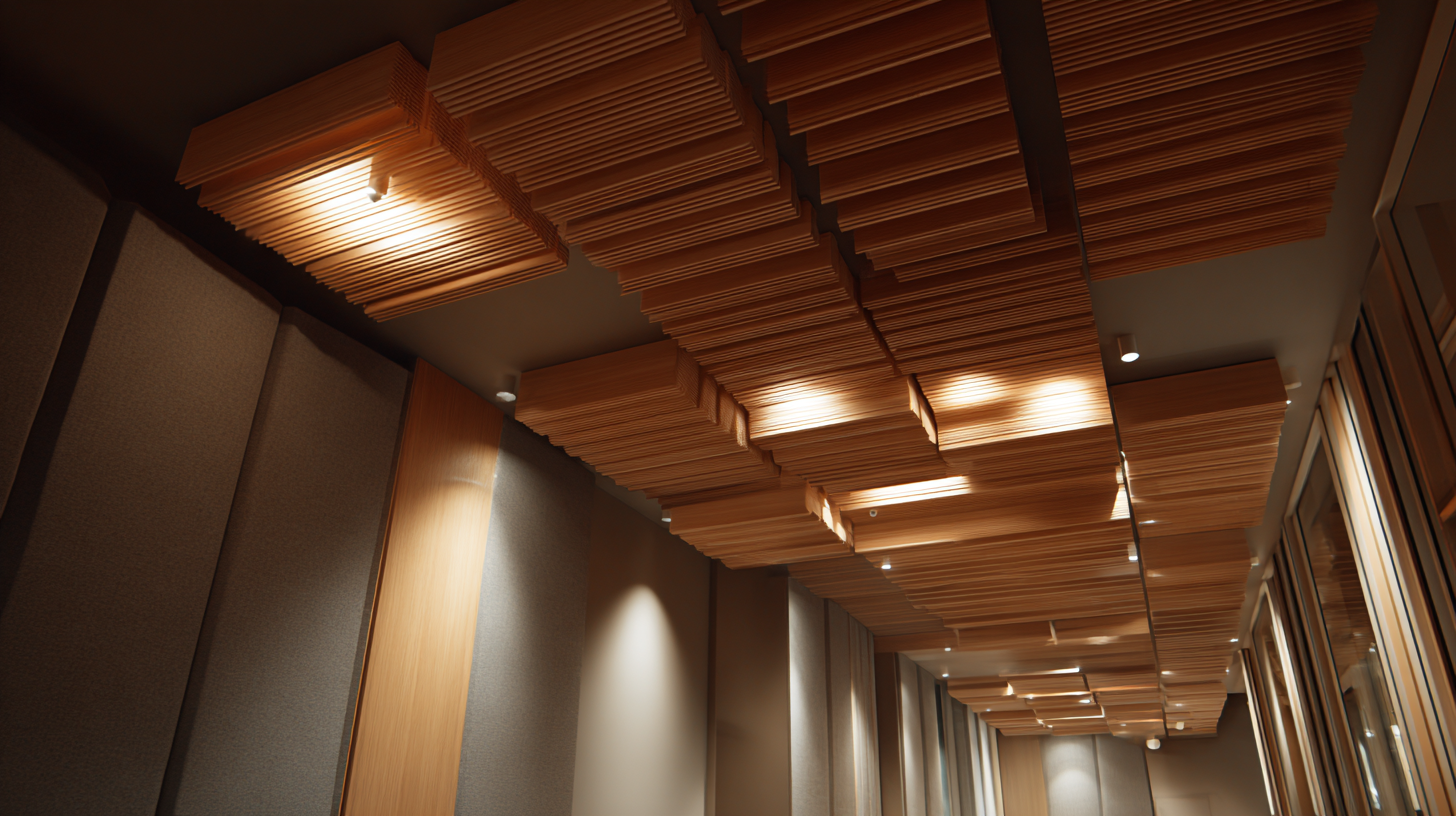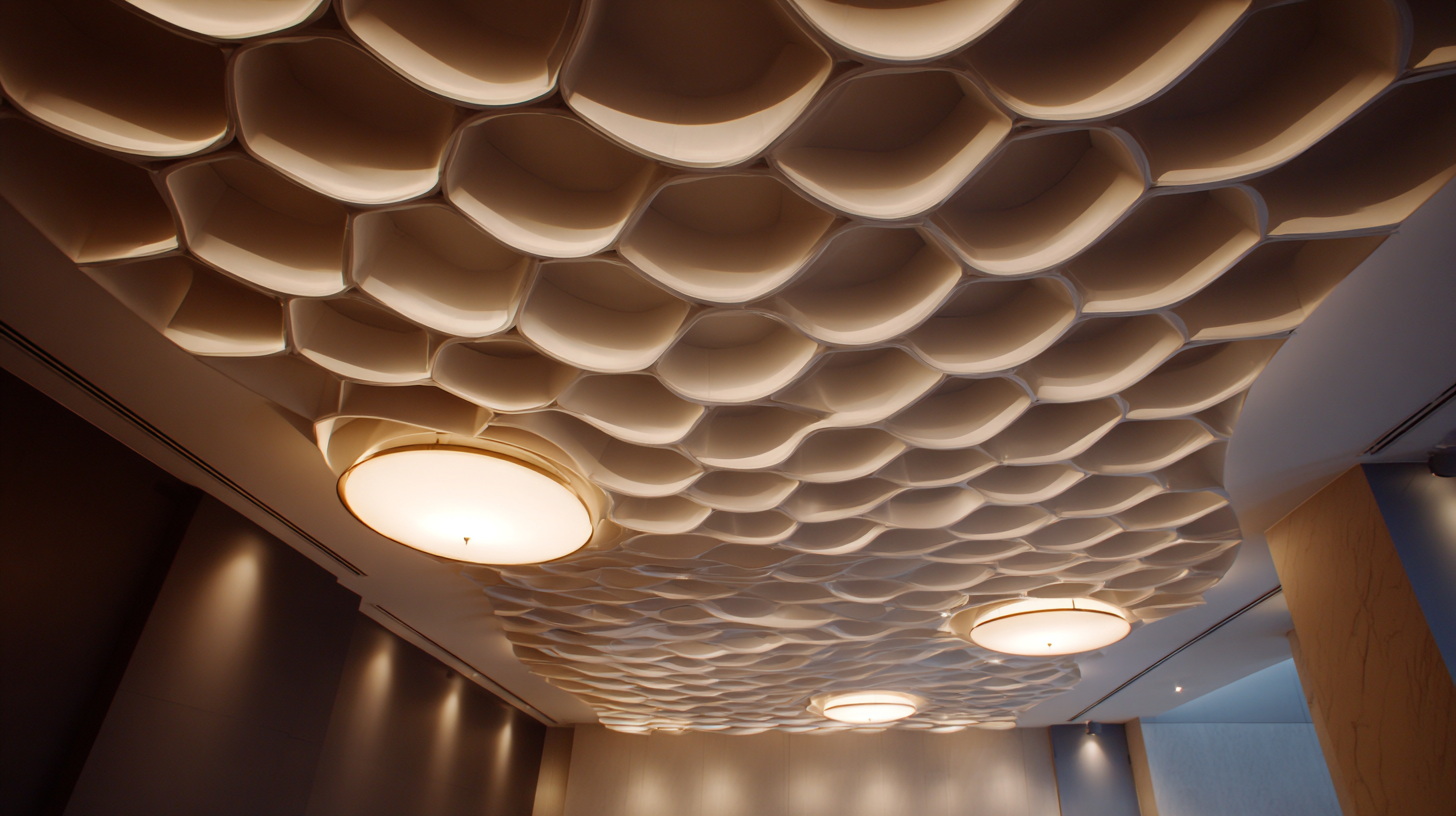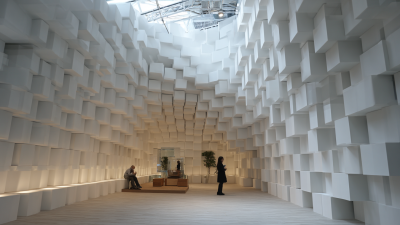In today's noise-filled environment, the significance of sound quality in everyday spaces cannot be overstated. According to a report by the World Health Organization, poor acoustic conditions can lead to increased stress levels and decreased productivity, highlighting the need for effective acoustic solutions. Research indicates that optimizing sound environments can reduce noise distractions by up to 30%, leading to a marked improvement in overall well-being and efficiency. As more industries recognize the impact of acoustics, the integration of advanced acoustic solutions has become a key consideration in architectural design and interior planning. By strategically implementing sound-absorbing materials and innovative design elements, spaces ranging from offices to restaurants can enhance auditory experiences, making a profound difference in how sound is perceived and enjoyed in our daily lives.

In today's increasingly noisy environment, the significance of acoustic solutions in improving sound quality in everyday spaces cannot be overstated. According to a recent market analysis by Custom Market Insights, the global acoustic ceiling tiles market is projected to reach USD 11.53 billion by 2033, growing at a compound annual growth rate (CAGR) of 5.21%. This growth is indicative of a rising awareness of the importance of sound management in various settings, from residential spaces to commercial environments. Acoustic solutions are essential not only for enhancing sound clarity but also for reducing noise pollution, which has become a critical concern affecting daily life.
The focus on effective acoustic design is evident in the developments within the audio equipment industry, as seen with the launch of new monitor speaker systems designed for honest sound reproduction. These advancements cater to those engaged in activities requiring audio precision, such as video editing and home recording studios. As noise pollution continues to escalate, the need for innovative acoustic solutions will likely drive market dynamics, emphasizing their role in optimizing sound quality for enhanced auditory experiences in everyday environments.
Acoustic treatments have become increasingly essential in enhancing sound quality in various spaces, from home studios to open offices. There are several types of acoustic solutions available, each offering unique benefits tailored to specific environments. For instance, absorbing materials like foam panels can significantly reduce reverberation and echo, creating a clearer sound. According to the Acoustic Society of America, environments equipped with proper acoustic treatments can improve speech intelligibility by up to 50%, making communication more effective in both personal and professional settings.
Another popular method is the use of diffusers, which scatter sound waves and minimize concentrated acoustic energy in a space. Diffusers contribute to a more balanced sound experience, enhancing the musical quality of spaces such as concert halls or home theaters. Research by the National Institute of Standards and Technology indicates that effective diffusion can improve listener enjoyment and perception of sound quality by creating a more immersive acoustic experience. Additionally, acoustic panels can also serve aesthetic purposes, allowing for creative designs that blend seamlessly with the existing decor while still optimizing sound performance.
 Acoustic panels and other soundproofing methods play a crucial role in enhancing sound quality across various environments, from home theaters to busy office spaces. Acoustic panels are specifically designed to absorb sound waves, reducing echo and reverberation. Made from sound-dampening materials, such as foam or fabric, these panels can be aesthetically pleasing while effectively managing sound reflections. In settings like recording studios or conference rooms, strategic placement of these panels can significantly improve audio clarity, making conversations and music more intelligible.
Acoustic panels and other soundproofing methods play a crucial role in enhancing sound quality across various environments, from home theaters to busy office spaces. Acoustic panels are specifically designed to absorb sound waves, reducing echo and reverberation. Made from sound-dampening materials, such as foam or fabric, these panels can be aesthetically pleasing while effectively managing sound reflections. In settings like recording studios or conference rooms, strategic placement of these panels can significantly improve audio clarity, making conversations and music more intelligible.
In contrast, traditional soundproofing methods, such as adding heavy curtains or insulating walls, may offer benefits but often fall short in managing sound quality. These methods tend to focus on blocking sound rather than controlling its behavior within a space. While they can reduce noise pollution, they might not eliminate unwanted echoes or improve overall acoustics. Therefore, a comparative analysis reveals that while both acoustic panels and conventional soundproofing methods have their merits, acoustic panels are typically more effective in creating a balanced auditory environment, ultimately enhancing the overall experience in everyday spaces.
In recent years, the importance of acoustic solutions in enhancing sound quality within various environments has gained significant attention. A notable case study illustrating this trend is the transformation of a traditional office space into a collaborative work environment at a leading tech company. By incorporating acoustic panels and sound-absorbing furniture, sound levels were reduced by up to 50%, significantly decreasing distractions and boosting productivity. According to a report by the Bureau of National Affairs, employees in well-designed acoustic spaces report a 33% enhancement in concentration levels, demonstrating the tangible benefits of thoughtful acoustic design.
Another compelling example can be found in the education sector. A school in New York implemented acoustic baffles and ceiling tiles in their classrooms, resulting in a 40% decrease in background noise. Research published by the Acoustical Society of America indicates that reduced noise levels can lead to a 25% improvement in student performance on standardized tests. This highlights the crucial role that acoustic solutions play not just in comfort but also in learning outcomes, making a strong case for their integration in educational facilities. These case studies emphasize how strategic acoustic interventions can transform everyday spaces into environments conducive to productivity and learning.
As the demand for better sound quality in our daily lives continues to grow, advancements in acoustic technology are paving the way for enhanced auditory experiences in various spaces. From smart home systems to innovative soundproofing materials, the future of acoustic solutions holds immense potential. Technologies such as digital sound wave manipulation and machine learning algorithms are being integrated into everyday products, allowing for customized sound profiles that enhance clarity and richness.
Tip: Consider integrating sound-absorbing panels in your home or office to minimize echo and background noise. This will not only improve sound quality but also promote a more tranquil environment.

Moreover, with the rise of augmented reality and immersive audio experiences, the way we perceive sound in our surroundings is transforming. Acoustic technology is evolving to create environments where audio seamlessly blends with visual elements, making everyday interactions more engaging and enjoyable.
Tip: Explore high-fidelity speakers or noise-cancelling headphones to experience the cutting-edge of acoustic technology in your personal leisure time. These devices can significantly elevate your daily sound experiences, whether you're working or relaxing.





